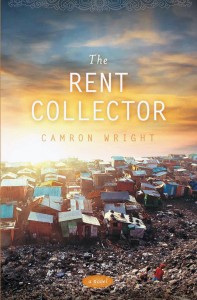 I can sometimes concede that my family lives in a dump.
I can sometimes concede that my family lives in a dump.
While my refrigerator is organized with an OCD-like zeal, I am not the most fastidious of housekeepers in most of the rest of our home. Who can totally keep up with the messy habits of four human males anyway?
Regardless of how badly the rug might need a quick vacuum, or whether or not the mirror is overdue for a Windex reunion, the “dump” we occasionally occupy is pristine and palatial compared to the accommodations in this month’s Under Cover Book Club pick, “The Rent Collector” by Camron Wright.
In “The Rent Collector,” we meet Sang Ly, Li Kim, and their infant son, Nisay, along with their neighbors and acquaintances, all of whom are making their home at Stung Meanchey, the largest municipal waste dump in Cambodia.
While the book is a work of fiction, Wright’s inspiration came from real-life people and events. Stung Meanchey, along with the people who lived there until it closed in 2009, is very real indeed.
Making their homes in most cases in crude three-walled shacks that rely on a canvas tarp to serve as the fourth wall, the residents at the dump struggle to survive from day to day. To earn a living, they sort through the garbage, scouring for recyclables that can in turn be sold.
While needing these funds to buy their daily food, enough must also be saved to pay their monthly due to the rent collector in order to retain their claim on the shack they call home, as well as to the individual who holds the rights to the water tap, the dump’s only source of fresh water.
To add to the cruel reality of life at the dump, residents must also be on constant alert to the dangers of the roving gangs who are known to beat trash pickers in order to steal their recyclables, or clean out one’s possessions if away from home for too long.
Wright first became aware of Stung Meanchey when his son made a documentary about life at the dump, called “River of Victory.” The film followed the story of the real-life Sang Ly, and her family, as she struggled to find a way to heal her chronically ill son.
Taking these real individuals, Wright then imagined a fictional life for them that, while retaining the true elements of life at the dump, considered what could be for the family if the gift of literacy was introduced.
The story examines not only Sang Ly’s relationship with her husband and son, but also those with her neighbors, extended family, and ancestors. We also meet the Rent Collector, an unpleasant drunk whom the tenants commonly call The Cow.
As Sang Ly comes to better know the Rent Collector, properly called Sopeap Sin, she discovers, as is the case most of the time, that there is much more to Sopeap than her gruff demeanor would suggest, including a rich past, an impressive intellect, and of course, personal tragedy.
Ultimately, “The Rent Collector” is a story of perseverance and redemption, but also a tale about the power of determination, and the ability to appreciate the things we all to often take for granted.
Despairing about her station in life, as a resident of a place as lowly as Stung Meanchey, Sang Ly is reminded by her Auntie, “finding beauty in (a) place simply depends on where you decide to stand.”
A firm testament to the fact that success and happiness can find solid footing, even in the most unlikely of places, “The Rent Collector” is a touching reminder about the resilience and adaptability of the unbreakable human spirit.
Edie Crabtree is an avid reader and the mother of three active boys. She can be reached at crabmom3@gmail.com.




